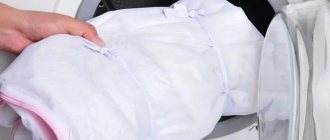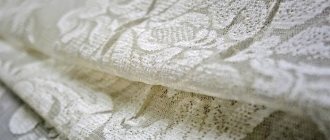57
like
5 minutes
Blankets are very popular in Russia - large scarves-blankets with fringes, which are so pleasant to cover yourself with in the off-season and in winter. Like other home textiles, they require regular care.
The question of how to wash a blanket is asked by many housewives, since the loose structure of the products, as well as static electricity, contribute to the rapid accumulation of dust. It’s hard not to notice it when you lay out a blanket that hasn’t been washed or dry cleaned for more than 1-2 months. Dust is an ideal habitat for saprophytic mites. Since these things are designed to give coziness, comfort and health, their cleanliness is a prerequisite for use in everyday life.
How to support it? Expert advice from CLEAN EVERYTHING will help you solve the problem in the simplest way.
One of the most frequently asked questions is whether you can wash a blanket by hand or is it better in a machine? Not every housewife can wash such large items by hand:
- When wet, the blanket, the size of a blanket, is difficult to even lift, let alone squeeze out the water. On the one hand, this is good, it means that excessive twisting will not deform the product. On the other hand, how to dry it - how long will it take a blanket to dry without spinning?
- You will need a bath for washing. Even in a large basin, it is difficult to thoroughly wash and rinse a blanket.
- Not all blankets can be washed. For example, for products made of natural wool, silk, viscose, the wet cleaning method is contraindicated. Although our housewives can do this too.
IMPORTANT : make the choice between washing and dry cleaning taking into account the manufacturer's recommendations regarding acceptable care technologies.
Do you want to calculate the cost of dry cleaning? There is now a 30% discount for you!
Knowing how to wash a blanket - large or small, you can decide whether you want to do this or whether it is better to entrust the dry cleaning of the blanket to the specialists of a specialized company. We offer you our services, as well as a proven hand washing algorithm with the best results with the least amount of labor:
- fill the bath with water at the temperature indicated on the product label;
- dilute textile detergent in water;
- soak the blanket in the solution for 1-2 hours;
- gently rub the most greasy places;
- drain dirty water, freeing the drain;
- Fill the bath with clean water at the desired temperature several times, rinse the blanket, and drain the water.
- The final rinse water can be softened with textile softener;
- let the water drain. Then they roll up the blanket and place it in the bath for half an hour, so that some of the water can drain out. After this, they unfold it and hang it flat on a strong stick to dry.
Preparing for washing
The blanket can be either small or voluminous, euro size. And if in the first case, care and washing do not cause any particular problems, then not all housewives can cope with a real giant.
The blanket needs to be washed regularly, once every 1.5-2 months or less, depending on the frequency of use. It happens that you can do without washing, removing dirt using the dry method.
Before washing any blanket at home, it is important not to skip the preparatory stage:
- Study the composition of the fabric on the label. If it is lost, you can find information on the packaging or the factory website. You can wash a blanket without deformation or damage only taking into account the composition of the fabric.
- Shake out dust and crumbs well or beat out the blanket in the fresh air. After these manipulations, it’s a good idea to ventilate it on the loggia or plot. Often it is dust and an unpleasant smell that makes you think about refreshing your favorite blanket. But if it is generally clean and free of stains, shaking it like this will solve the problem.
- Spot stains can be removed without a full wash. A wet blanket soaked in water is very heavy (especially Euro-size), and it will be difficult to wring it out and dry it. Therefore, if you need to get rid of one or two stains, it is not necessary to wash the entire bedspread.
Advice! You can even get rid of old stains. Try to wash away grease stains in a soap solution, traces of berries and juice - in cold water with liquid soap; blood can be removed with peroxide.
With all the wealth of choice...
Washing a blanket by hand is not an easy task, although it seems that this does not require any special skills or knowledge. However, the larger the item and the more complex its texture, the more effort will have to be made to restore it to its former softness and purity. Even a blanket in muted, dark shades will sooner or later have to be sent to the bathroom. How to properly care for large blankets and what should you pay special attention to?
But first, it’s worth considering alternative options:
- Dry cleaning. This method, contrary to popular belief, is not only for the busy and lazy. You have to take things to dry cleaning if the stains simply cannot be removed at home. But it should be remembered that exposure to chemical reagents can either give things a second life or hopelessly ruin them. Moreover, this pleasure is not cheap.
- Machine washable. A great way to tidy up small blankets and blankets. The product itself must fit into the drum of the washing machine, and this is not always possible. This means that the item will have to be washed by hand.
- Manual "dry" cleaning. A kind of half-measure that allows you to refresh the appearance of the product, but does not get rid of serious contaminants that penetrate into the structure of the rug.
If none of the options is suitable, all that remains is to wash your favorite blanket by hand in a regular bathroom.
Back to Contents
Machine washable
Most blankets have some percentage of synthetics in their composition. This is done for greater wear resistance, practicality and ease of maintenance. Fully synthetic home textiles are unpretentious and can easily survive machine washing. But it is better to wash natural products on delicate programs or by hand.
Before using an automatic machine, it is important to know the weight of the product and the capacity of the equipment. In a crowded drum, the detergent will be distributed unevenly, dirt from hard-to-reach areas will not be removed, and the rinse will be of poor quality.
Advice! You can wash a voluminous blanket in a machine with a load of at least 5 kg. We must not forget about the weight of the bedspread and its volume.
If the drum allows you to load bulky items, and the manufacturer allows the use of an automatic washing machine, then you can safely wash the soiled blanket in the washing machine.
Procedure:
- Load the blanket into the drum. It is better to wash it separately from other things.
- Fill the compartment with detergent in the recommended amount. For blankets made from natural fabrics (wool, silk, cashmere), it is advisable to use special gels.
- Set the delicate wash mode or program (“Wool/Silk”, “Synthetics”).
- If the program does not set the spin and temperature parameters, then set them (30-40 ° C, delicate spin at 400-500 rpm or drain without spin).
- For fleecy blankets, you can turn on an additional rinse.
- Drying in a machine is prohibited.
Advice! Add conditioner to reduce static, frizz and odor.
How to properly dry a blanket after washing
Even when it is extremely clear how to wash a blanket made from different materials, you need to learn how to dry the product. For example, synthetics do not tolerate high temperatures, and a blanket made of natural or artificial wool will take on a lumpy appearance if you dry it under the pressure of warm air - a hairdryer. Ironing a blanket made of any material to speed up drying is also not worth it. The easiest way is to remove excess moisture from the fabric using a terry towel and dry it on a regular clothesline. In order for the fabric to retain its original color after numerous washes, it is important to avoid intense exposure to the sun when drying.
Handwash
You will have to tinker a little and wash the soiled blanket by hand if machine washing is prohibited or the bedspread is made of delicate natural fabric. Manual cleaning is also necessary for unpretentious products that simply do not fit into the washing machine drum. If the bedspread is large, then the hostess will also need physical training - a wet blanket is very heavy (you can ask someone close to you to help). But what won’t you do for the purity of your favorite thing!
Washing algorithm:
- Warm water up to 40 ° C is poured into the bath approximately halfway.
- A detergent is added (it is better to take a liquid gel, it dissolves evenly and does not remain in the fibers).
- The blanket is completely immersed in water. If the composition allows, you can soak it for a while (synthetic bedspreads are unpretentious and can be soaked in slightly warm, but not hot water).
- The entire surface is treated with gentle squeezing movements (you can even trample it with your feet); individual stains can be washed with a sponge and soap.
- The water is drained, the blanket is gently pressed to remove excess moisture, then rolled into a roll and placed vertically to drain the residual water.
- Pour clean water into the bath and rinse the blanket until it becomes clear. At the last stage, you can add conditioner to the water.
- The roll is rolled up again and left in the bath again to remove excess liquid.
Advice! A few drops of vinegar when hand rinsing will lock the vibrancy of the color into the fibers.
It is important that the blanket does not remain too heavy, and that excess moisture is removed as much as possible. Otherwise, drying the item will become problematic; under the weight of its own weight, the bedspread will stretch and lose its shape. After the excess water has drained off, you can hang the blanket on a drying rack or line.
Where and how to store a blanket at home
- It is best to place the product in a pillowcase or bag made of natural fabric. Polyethylene is not suitable. This is due to the fact that it does not allow air to pass through; as a result, the blanket may acquire an unpleasant smell of a stale item.
- A sprig of lavender or cedar on a shelf will repel moths and other pests that can cause irreversible damage.
- The fresh smell will return if you just leave it in the wind for a while. It is good to take the blanket out into the air in winter.
The appearance of any textile product depends on how carefully it is used. Avoid food and drink stains. Also, do not allow animals to play on the blanket. They can scratch it with their claws. These simple recommendations will help you keep your blanket bright and beautiful for a long time.
Many housewives are annoyed after washing when they see that their colored linen has faded. How to wash correctly, Items made of viscose look very beautiful and bright, but due to improper care they become very fast, Natural fabrics are expensive, but cause certain difficulties when washing. To remove contaminants you will need, Properly washing and drying a down jacket is a whole science, because due to poorly selected
How to wash a large blanket?
The difficulty of manual care and the bulkiness of such bedding causes a lot of trouble. Especially if the household resources and capabilities of the housewife are limited. But you can still find a solution, and here are some of them:
- dry cleaning (especially important for light-colored items made from natural fabrics);
- laundry (the drum of industrial equipment has sufficient capacity, so even the widest and most voluminous blanket can easily fit into the laundry machine);
- hand wash at home.
One way or another, something will have to be sacrificed. In the first and second cases - with a certain amount, in the last - with personal time:
- If your household appliances are designed for a large load (6 kg+), then you can wash synthetic and semi-synthetic blankets in a machine, not forgetting about the mode, temperature and spin intensity. A Euro size blanket will fit into this machine and will be washed efficiently;
- If the “washing machine” is compact, and also if you are the owner of a cashmere, natural wool, silk bedspread or a blanket with long faux fur, clean exclusively by hand. The principle and sequence of actions are similar: the blanket is soaked in the bathroom with a suitable product, rinsed, then excess moisture is naturally removed, and only then delicate drying.
Advice! To hand wash a blanket, you can use a liquid cleaner for carpets and home textiles.
How to organize drying a blanket?
After washing, any blanket will be very heavy, so even if you have more than a dozen strength, it will be quite difficult for you to pull such a bulky and half-damp thing out of the bath in one go.
You will have to work hard: quietly lift the blanket, then throw it into the far corner, wait until most of the moisture comes out of it, and only then make active attempts.
After the water has drained from the blanket, roll it up, set it down and wait a few minutes until it becomes lighter and softer. After this, the blanket can be sent to dry on the balcony (don’t forget to use clothespins) or in a special dryer.
If pellets appear on the bedspread after washing, you can easily get rid of them using a simple combing brush, which is sold in pet stores.
After this procedure, the blanket will again acquire the desired shape, become soft and pleasant to the body.
Features of washing blankets made of different materials
The subtleties of caring for home textiles determine its composition and frequency of use. When purchasing a blanket they like, far-sighted housewives pay attention not only to its color and design, but also to its composition.
Alize Puffy
It has become a real trend dictated by popular fashion bloggers and interior designers. The base is Alize Puffy, a pleasant-to-touch plush yarn made from 100% polyester – pure synthetics. You need to wash a blanket from Alize Puffy using gel or conditioner with lanolin - it gives softness and prevents the plush fibers from rolling off.
Since this is a synthetic product, there are two options for caring for it:
- Wash the plush blanket in an automatic machine on a delicate cycle and the lowest spin speed.
- Wash by hand in lukewarm water and allow excess liquid to drain after rinsing.
Made from polyester
Synthetic textiles are not afraid of machine drums, so the washing rules are similar to plush fluffy blankets.
Bamboo
Bamboo fiber blankets can also be washed by hand or in a washing machine, but the temperature in this case should not exceed 30°C. It is permissible to steam a slightly damp blanket with an iron at the minimum setting to remove creases.
Fur
It is advisable to take skins made from natural fur, sheepskin or an artificial analogue to the dry cleaner. Attempts to freshen things up at home can end in failure and affect the appearance.
Loading such a blanket into a washing machine is dangerous, and hand washing can only harm the product and ruin its appearance.
Fleece
Fleece blankets are warm and light, perfect as a bedspread for a child's bed and sometimes replace a blanket. They can be washed on a delicate cycle, it is not advisable to wring them out, but they dry very quickly - the fleece does not retain moisture and is quickly restored.
Woolen
Any products made from natural wool are very demanding and do not like moisture. It is advisable to clean them dry or partially, washing them as rarely as possible. If possible, it is worth visiting a dry cleaner.
Blankets containing wool can be washed at home, but only by hand in cold water. It is unacceptable to wash a wool blanket using any bleach, but special gels for washing wool are welcome. They prevent deformation, reduce static electricity and provide softness.
Drying - only horizontally in a well-ventilated area away from heating devices and direct sunlight.
Long pile blanket
For several years now, bedspreads, rugs and even decorative pillowcases with long pile have been popular. Over time, if not properly cared for, synthetic “grass” can become tangled, fluffy, and lose its shine and softness. To prevent this from happening, the fleecy blanket must be washed correctly.
“Weed” is usually made of synthetic fiber, so this product can be washed in a machine on a delicate cycle without spinning or with minimal spin. It is important to roll the grass blanket into a roll, with the pile inward, and dry it on a horizontal surface in a straightened form.
Tapestry bedspread
You can wash a tapestry in a washing machine, provided that the drum capacity is sufficient and the recommendations for gentle care are followed (low temperatures, drain without spinning, low speed). The use of chlorine bleaches is not allowed, because... they have a detrimental effect on the color and quality of the fibers.
Hand washing is a priority if the tapestry has small stains, which are best removed point by point. For large sizes, it is better to wash it carefully in a bath with soapy water.
How to dry
After all the dirt has been washed off, you need to dry the blanket properly. To do this you will need:
- spread a clean terry cloth on a horizontal surface;
- lay a thick washed blanket on top;
- change the fabric every two to three hours for dry ones.
It should be taken into account that under the influence of ultraviolet radiation, the fabric can deteriorate, so drying should only take place in the shade.
Every housewife who has combed a blanket shortly before it completely dries will confirm that such actions significantly improve its appearance.
Drying rules
Drying directly depends on the washing method and the composition of the material (how resistant it is to deformation and how quickly it can recover). If the manufacturer does not indicate on the label the possibility of spinning and drying, then the washed blanket can be hung on a line or dryer in the usual way. The fabric will dry quickly, and the bedspread itself will not stretch under its own weight.
It’s more difficult with a hand-washed blanket. It is impossible to qualitatively remove water from the fibers, and spinning is prohibited in most cases. Delicate fabrics are dried on an absorbent substrate in a horizontal position. The room should be well ventilated; it is better to organize drying in the open air, but avoid scorching sunlight. Periodically turn the blanket over and straighten it to dry evenly.
Helpful Tips:
- To prevent the bedspread from accumulating dirt and dust during storage, you can wrap it in an old pillowcase.
- It is not advisable to store such products in plastic bags, because due to the lack of ventilation, an unpleasant odor may appear, as well as moths and other pests.
- It is better to dry clean a blanket made of natural fur, since this material does not tolerate moisture well, and it can react completely unpredictably to any home cleaning methods.
Dry blanket care
You can refresh your home textiles without resorting to grueling washing or using washing equipment. Heavy volumetric bedspreads are passed over the surface with a soft brush to remove crumbs, hairs and raise the pile. A vacuum cleaner with a small attachment that allows you to remove dry dirt from deep within the fabric will also help.
Small-sized blankets can be knocked out on the balcony and in the fresh air, and then left to ventilate. Often the dusty and stale smell goes away, and the soft pet continues to give warmth and comfort without additional hassle.










